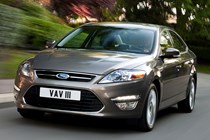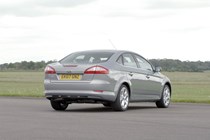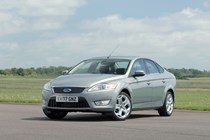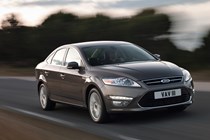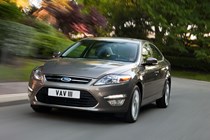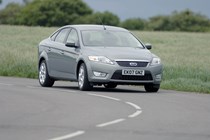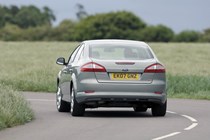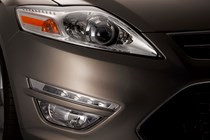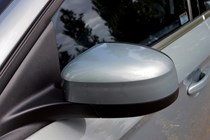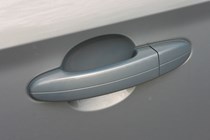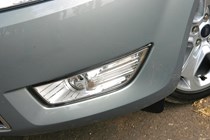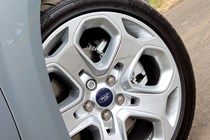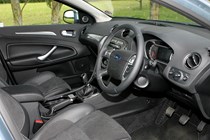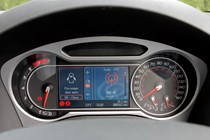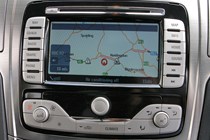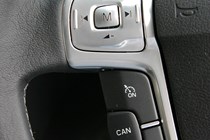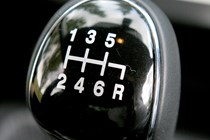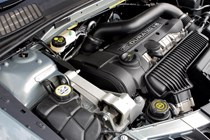Ford Mondeo Saloon (2007-2010) engines, drive and performance

Engines on sale from its launch in June 2007 are a 1.6-litre petrol with 125bhp, a 2.0-litre with 145bhp, a 160bhp 2.3-litre and a 220bhp turbocharged 2.5-litre. The excellent diesel range includes a 1.8 TDCi with 125bhp and a 2.0-litre TDCi with 130bhp or 140bhp. The 2.0-litre TDCi diesel is a great all-rounder with enough go for when you want it and impressive fuel economy when you don’t – punchy and responsive when pushed it’s equally refined and relaxed when cruising on the motorway, plus it will return 48mpg.
The 2.5-litre turbocharged unit is equally good with a great engine note and incredible response from low revs. However, if you want strong pace but acceptable running costs, a 2.2 TDCi was launched in May 2008. It produces 175bhp and as a result is only a second slower from 0-62mph than the 2.5T (taking 8.4 seconds), but on the move feels just as rapid and refined.
At the end of 2008 the 1.6-litre and 2.3-litre petrol engines were dropped from the line-up. In 2010 Ford added two new engines to its line-up – a new 237bhp version of the 2.0-litre turbo petrol EcoBoost engine and a new 197bhp 2.2-litre TDCi diesel. The 197bhp 2.2-litre TDCi Duratorq diesel engine mated to a six-speed manual gearbox is quite something.
The engine is very refined and quiet making journeys relaxing. Performance figures are relative for this size of car – the petrol engine will get from zero-62mph in 7.9 seconds and it has a top speed of 144mph. While the 197bhp 2.2-litre diesel will complete the benchmark sprint in a time of 8.1 seconds and has a top speed of 143mph. The petrol unit tested was the 237bhp EcoBoost mated to an automatic six-speed PowerShift gearbox.
There is plenty of pulling power 340Nm (and 360Nm when boost from the turbo is in use) and overtaking slower traffic on single-lane carriageways is completed with ease.
All recent Fords have been brilliant to drive – a trait which the new Mondeo continues. It’s a good compromise between a sporty and comfortable set-up. On twistier roads it corners superbly with excellent steering, little bodyroll and plenty of grip. On the motorway it cruises serenely. It’s also possible to specify adaptive suspension. At the push of a button, you can change the suspension from ‘Normal’ to ‘Comfort’ or ‘Sport’.
In practice, the standard set-up will be ideal for most drivers, so you’re better off saving your money. However, if you want to drive enthusiastically, switch to Sport mode and the car becomes a little more responsive and the steering weights up a little.


